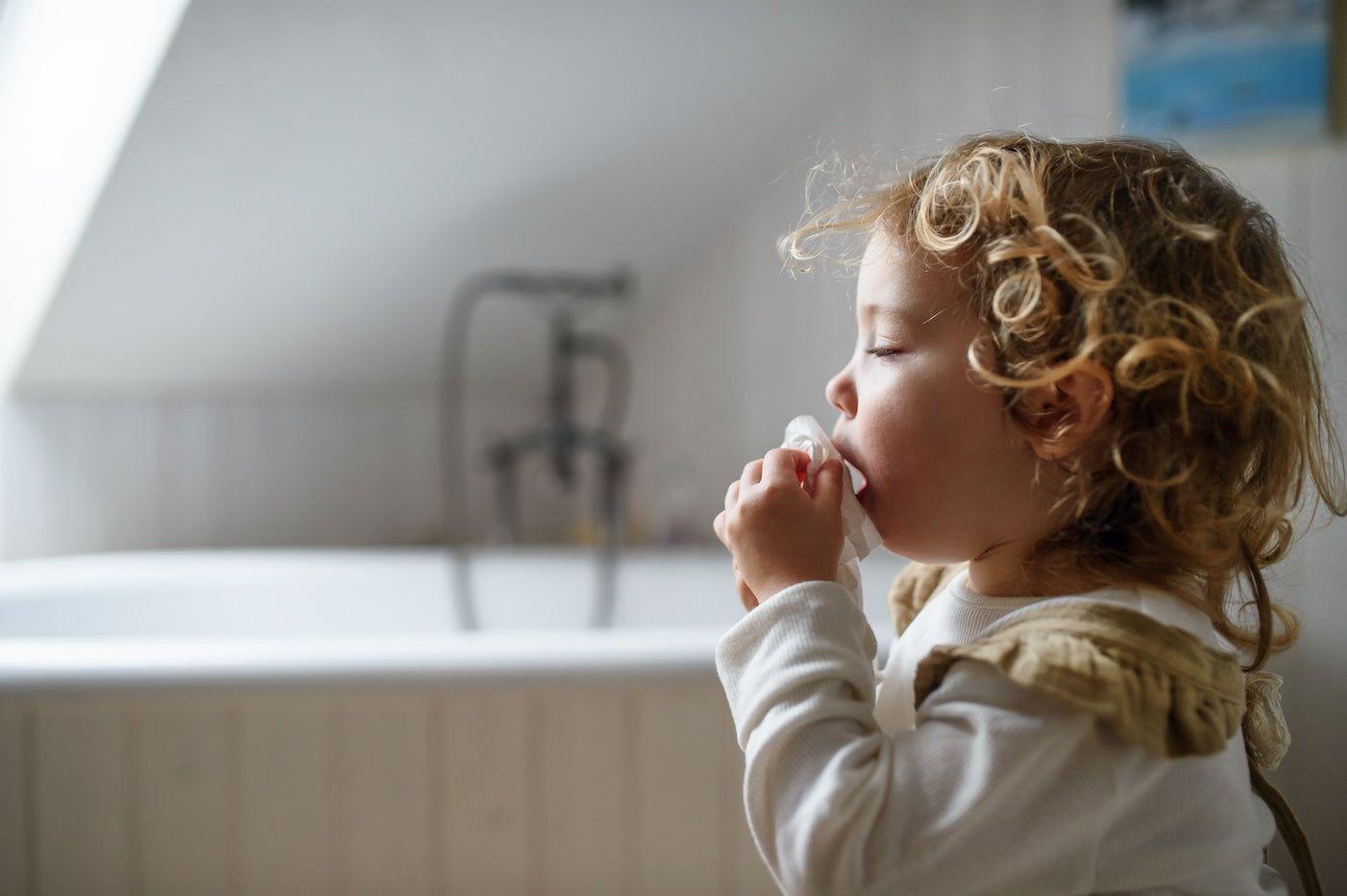TODDLER
Spotting Walking Pneumonia: A Parent’s Guide to This Under-the-Radar Illness
Experts warn this common but tricky-to-spot illness is on the rise in young kids.

Written by
Happiest Baby Staff

SHARE THIS ARTICLE
PARENT PICKS
Bestsellers
TODDLER

Written by
Happiest Baby Staff

SHARE THIS ARTICLE
Bestsellers
Right around the time the leaves begin to turn and a nip enters the air is when little noses start running, tiny coughs become a persistent sound track, and the calls from daycare start to ramp up. In other words, most parents of little ones are no strangers to the usual suite of sickies that dominate the cooler months.
But lately healthcare providers have noticed another illness has “entered the chat." Experts have clocked a concerning rise in cases of walking pneumonia, particularly in children.
This milder form of pneumonia can sometimes go under the radar, with symptoms that may appear similar to a common cold. Yet, it’s important for parents to know how to identify and address this condition to help little ones get back on their feet. To help, we’ll walk you through everything parents need to know about walking pneumonia in children—from what it is to how it spreads, how long it lasts, and when it’s time to book an appointment with your general practitioner.
Walking pneumonia is a type of pneumonia, an infection in the lungs, that tends to be milder than typical pneumonia. The bacterium Mycoplasma pneumoniae is the main culprit behind this illness. It leads to a gradual onset of respiratory symptoms that tend to stick around longer than the common cold, and can affect people of all ages, though it’s particularly common in school-aged children.
Unlike the severe symptoms associated with pneumonia (like high fever and significant shortness of breath), walking pneumonia’s symptoms are low-grade symptoms, which allows those affected to “walk around” without feeling terribly sick.
Yes, walking pneumonia is contagious. Although it is not as contagious as some other chest infections, like the flu or COVID-19, it can still spread relatively easily in close quarters.
Walking pneumonia spreads like other respiratory infections—through droplets that are expelled via sneezing, coughing, or talking. One tricky aspect of walking pneumonia is that its mild symptoms can sometimes lead to delayed diagnosis, meaning kids can spread the illness before it’s detected. This is especially problematic in places where kids spend lots of time close to one another, like among family members, at school, or in daycare.
The symptoms of walking pneumonia can be subtle and develop gradually over one to three weeks. For many, symptoms of walking pneumonia will copycat a prolonged cold or mild flu. But children don’t always have classic chest-cold-like signs.
Symptoms of walking pneumonia in children may include:
Your child’s healthcare provider may listen to their lungs with a stethoscope for signs of infection. Beyond a physical exam, walking pneumonia might be diagnosed with:
One of the defining characteristics of walking pneumonia is just how long it can stretch on. While the fever and more irritating symptoms usually resolve in a week or two, the cough and fatigue can linger for several weeks—even up to a month.
While walking pneumonia can be uncomfortable, most cases resolve with supportive care, such as rest, hydration, and over-the-counter medications to relieve symptoms like fever and sore throat. In some cases, especially for children with more severe symptoms or risk factors, your GP might prescribe antibiotics.
Here’s how to keep walking pneumonia at bay:
Most cases of walking pneumonia in kids are mild and can be managed with supportive care. However, certain red flags should signal you to get your provider on the phone, such as…
While walking pneumonia can be uncomfortable and disruptive, most children recover fully with time and TLC. Knowing the symptoms and recognising when to seek help can make all the difference in getting your tyke healthy again.
***
REFERENCES
Disclaimer: The information on our site is NOT medical advice for any specific person or condition. It is only meant as general information. If you have any medical questions and concerns about your child or yourself, please contact your health provider. Breastmilk is the best source of nutrition for babies. It is important that, in preparation for and during breastfeeding, mothers eat a healthy, balanced diet. Combined breast- and bottle-feeding in the first weeks of life may reduce the supply of a mother's breastmilk and reversing the decision not to breastfeed is difficult. If you do decide to use infant formula, you should follow instructions carefully.